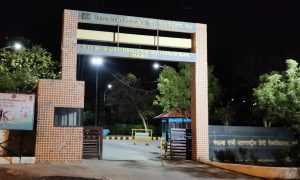The Minister of State for Environment, Forest, and Climate Change, Ashwini Kumar Choubey on the occasion of 27th Global Ozone Day, September 16 released the action plan for the implementation of the recommendations of ICAP.
ICAP or the India Cooling Action Plan (ICAP) addressed the cooling requirements across sectors and has listed actions that can help reduce the cooling demand through synergies in actions for securing both environmental and socio-economic benefits.
With the action plan, the Ministry will now proceed the work towards the recommendations of ICAP to reduce and meet cooling demands in a sustainable manner.
India Cooling Action Plan (ICAP)
Cooling is linked with economic growth and is recognized as key to the health, wellbeing, and productivity of people in hot climates. India, a growing economy, has a tropical climate. The economy is characterized by low penetration of air-conditioning, rising per capita income, and rapid urbanization. All of these would lead to a rise in the requirement for cooling. Further, it is expected that the demand for cooling will grow in the coming years. To address this growing demand for cooling, ICAP was recommended.
The Ministry of Environment, Forest, and Climate Change under the Government of India developed the India Cooling Action Plan (ICAP). India is one of the first countries in the world to develop a comprehensive cooling Action Plan. This would also help in reducing direct and indirect emissions. It synergizes actions for addressing the cooling demand across all sectors and recommends means to meet the cooling requirement by sustainable means. The ICAP provides a 20-year perspective (2017-18 to 2037-38) plan.
The ICAP takes a holistic and balanced approach by encompassing both passive and active cooling strategies as well as optimization of cooling loads. It includes passively-cooled building designs for natural and mechanical ventilation, promoting the use of energy-efficient refrigerant-based appliances, policy interventions, and more.
The ICAP underlines the importance of further development and use of a robust mix of cooling technologies, including the use of energy-efficient appliances with appropriate environment-friendly refrigerants, for meeting the growing cooling requirement of the country.
Why is cooling a threat to the ozone layer?
The requirement of cooling is pervasive across different sectors of the economy, such as residential and commercial buildings, cold-chain, refrigeration, transport, and industries. However, these are a threat to the environment.
The refrigerants contained in air-conditioners and refrigerators can be extremely harmful to the environment. Many refrigerants, such as chlorofluorocarbons (CFCs) damage the ozone layer, while others are extremely potent greenhouse gases. Chlorofluorocarbons (CFCs) are nontoxic, nonflammable chemicals containing atoms of carbon, chlorine, and fluorine. They are used in the manufacturing of aerosol sprays, blowing agents for foams and packing materials, as solvents, and as refrigerants.
According to studies, CFCs are safe to use in most applications and are inert in the lower atmosphere, they do undergo significant reactions in the upper atmosphere or stratosphere. They release inorganic chlorine, which destroys the ozone in the stratosphere. The Ozone layer acts as a protective stratospheric shield against the sun’s harmful ultraviolet radiation.
With the expected rise in demand for cooling, the threat to the ozone layer also increases.
Impact of the release
The Ministry released the action plan for the implementation of the recommendations made by ICAP, for the thematic area space cooling in buildings. The Action Plan has been developed after mapping the recommendations given in the ICAP and after detailed discussions with various stakeholders including line departments and Ministries. It will thus address the cooling requirements across sectors and list out actions that can help reduce the cooling demand in a sustainable and efficient manner.
Further, it will also help to maximize the socio-economic co-benefits of all the stakeholders involved. The action plan also addresses space cooling in buildings as a priority and the Ministry has come out with action points relating to the implementation of the recommendations.
Integrated actions have a higher impact than any of the actions taken in isolation. The action plan provides an integrated long-term vision on cooling encompassing, optimization of cooling demand, integration of energy efficiency, and refrigerant transitioning efforts, and adoption of better and green technology options.






















 WhatsApp us
WhatsApp us
Pingback: 토렌트 다운
Pingback: สล็อตเว็บตรง
Pingback: psychedelic drugs opinion articles
Pingback: ติดเน็ตบ้าน AIS